Burnout Blog
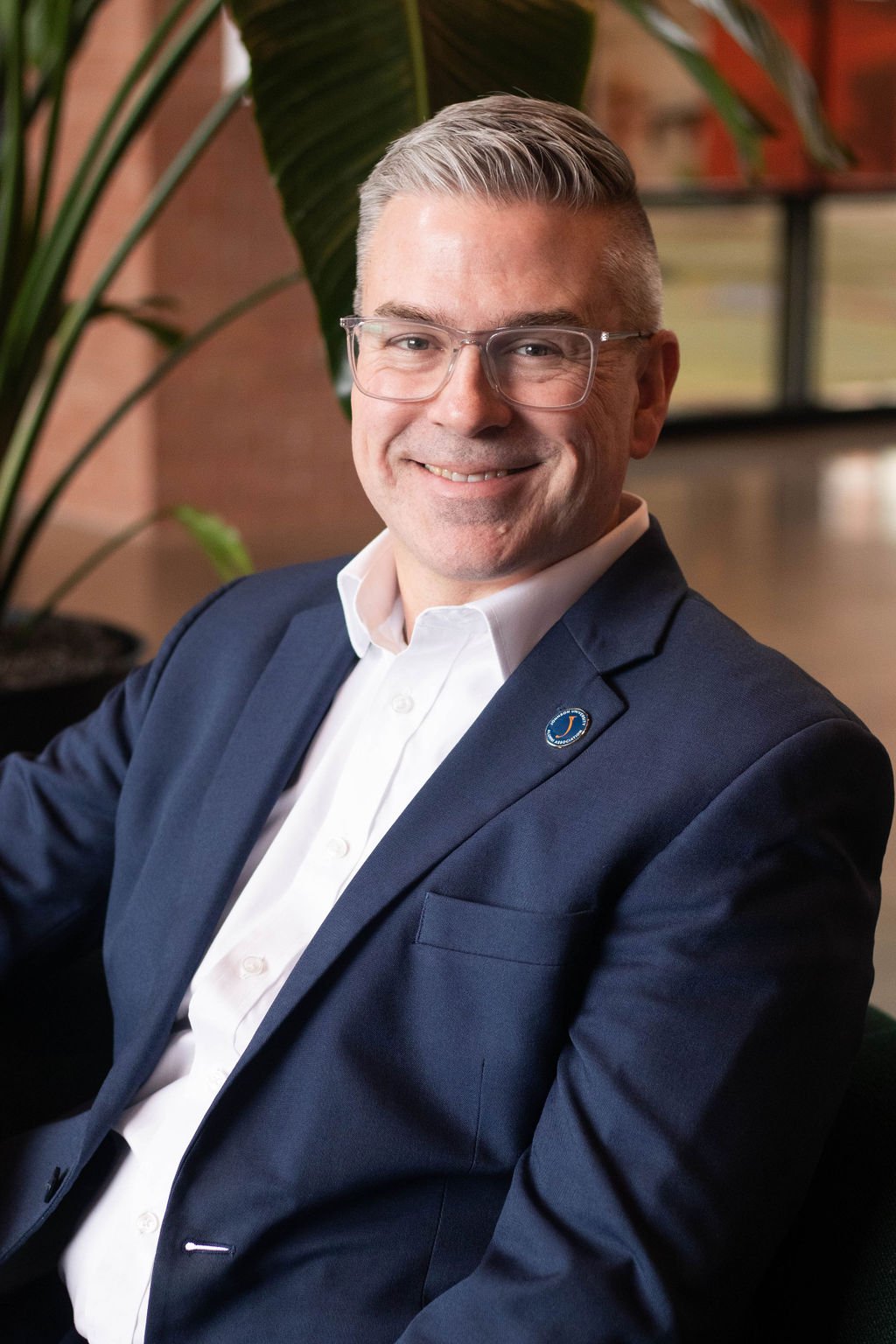
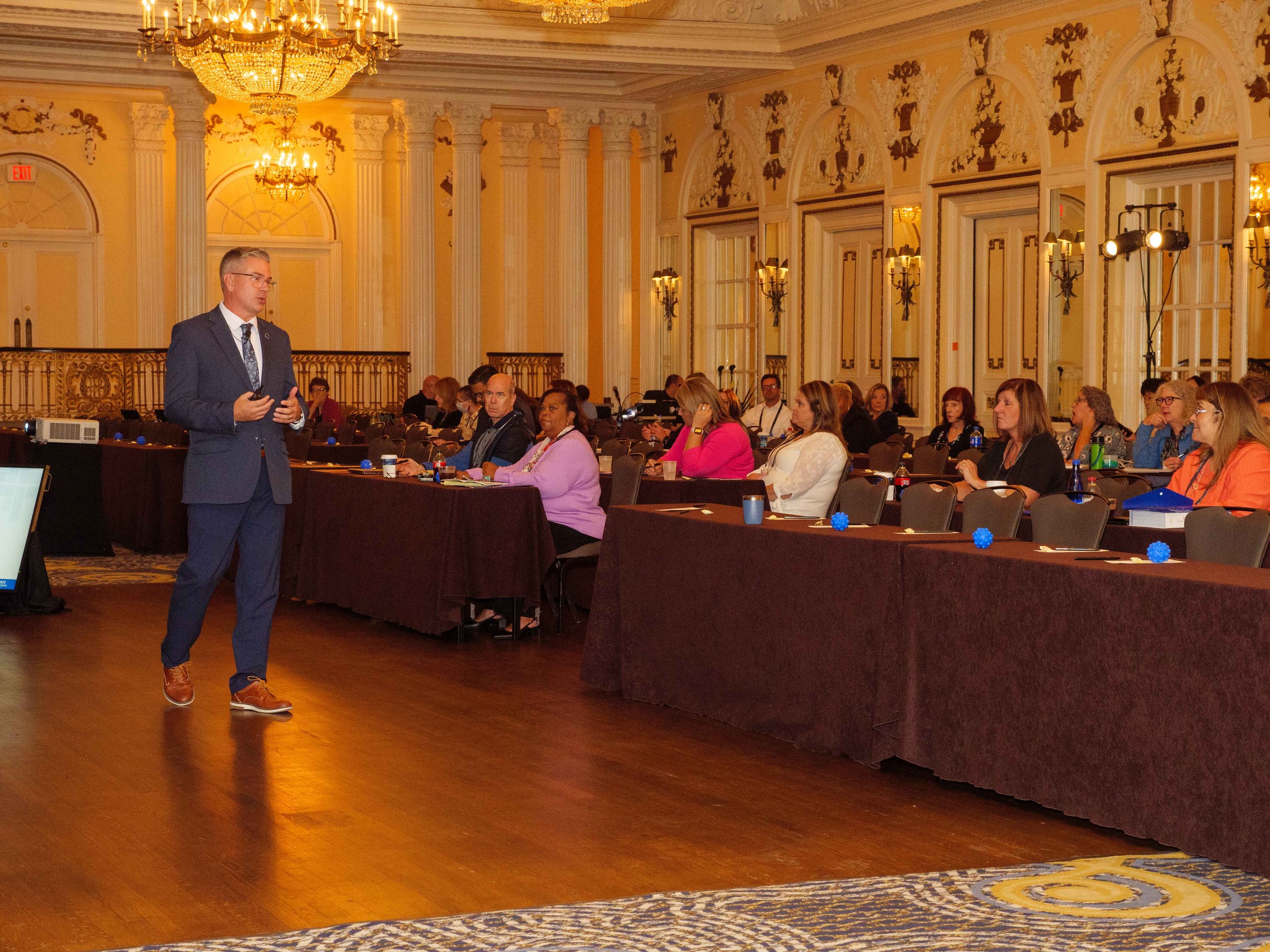






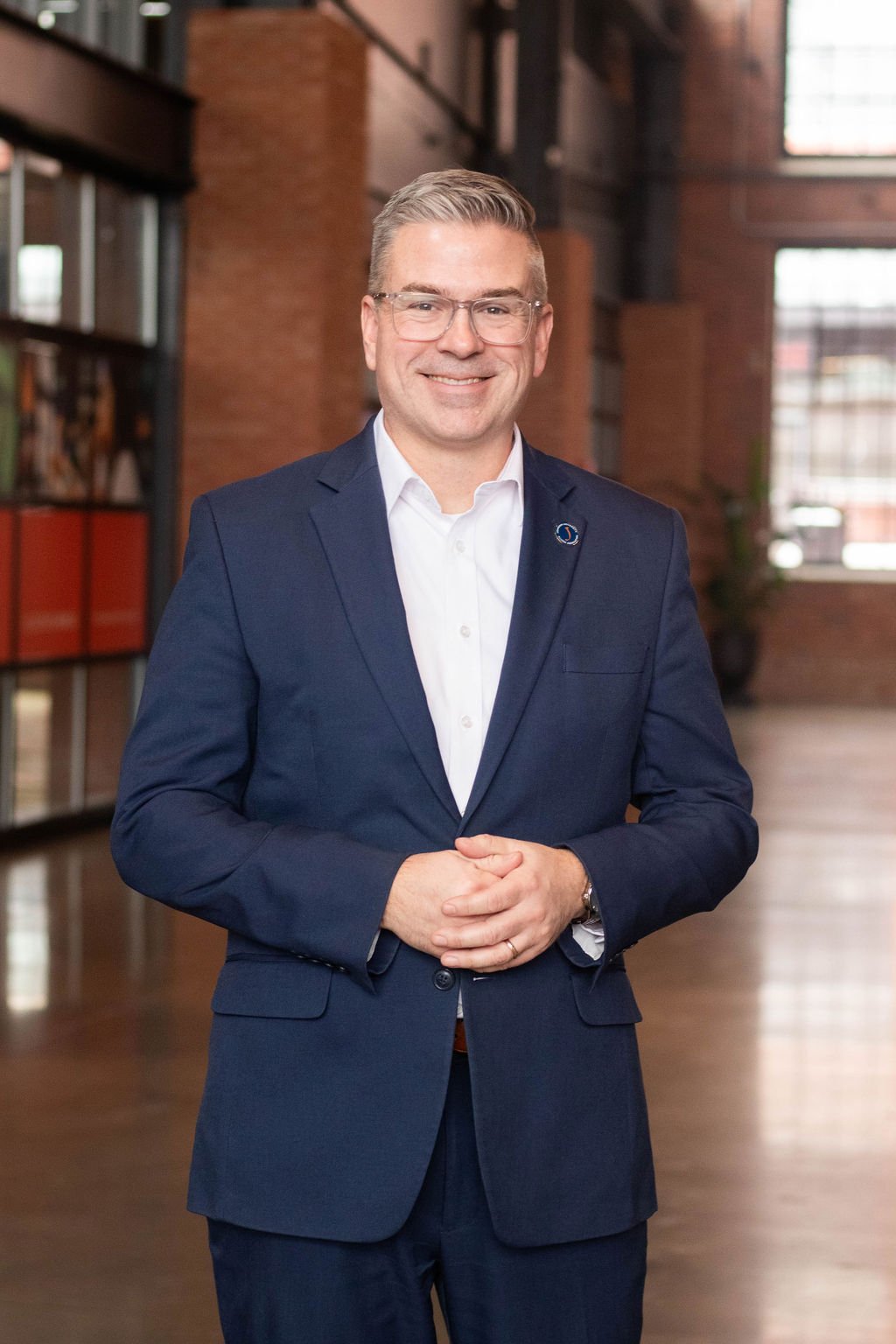



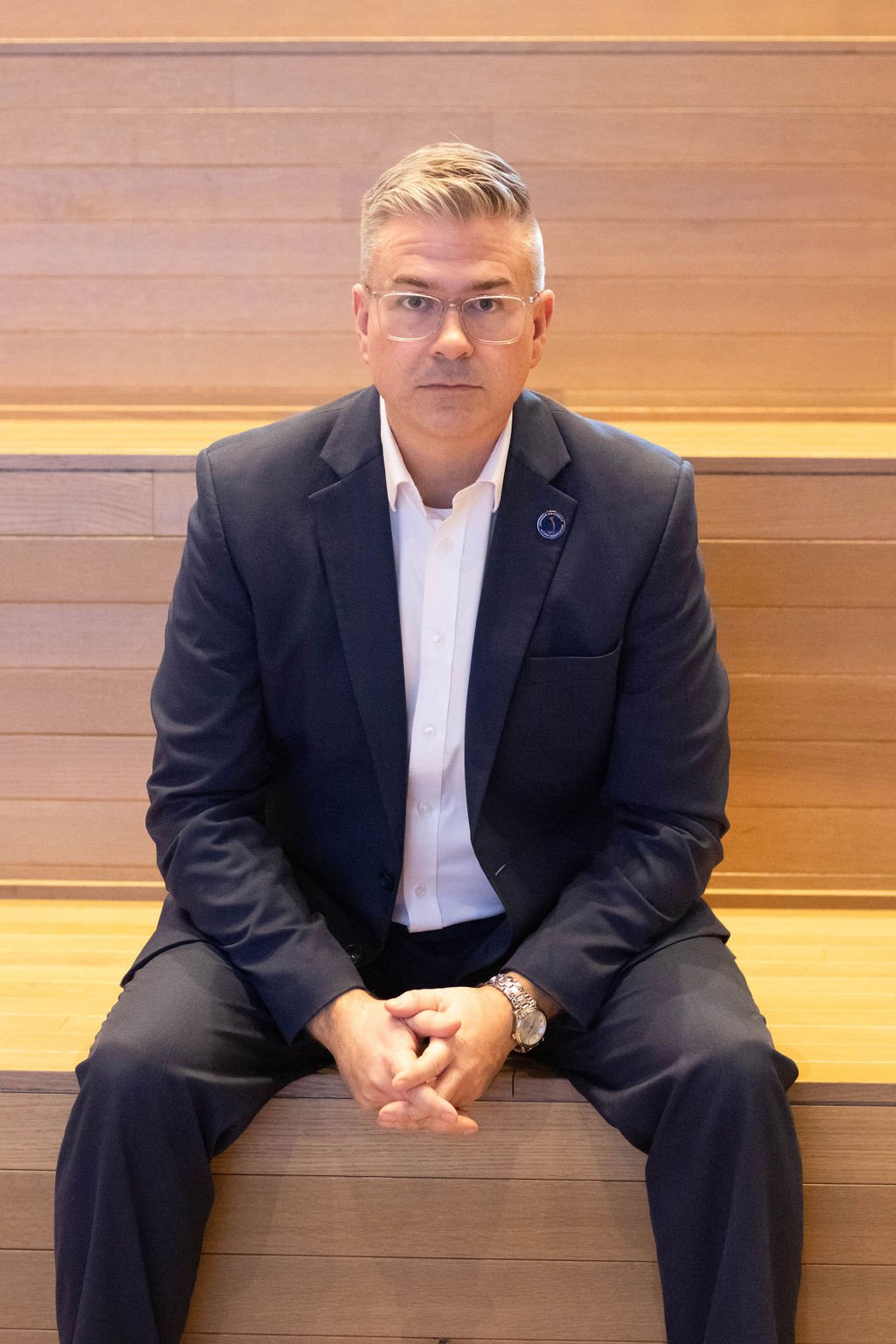



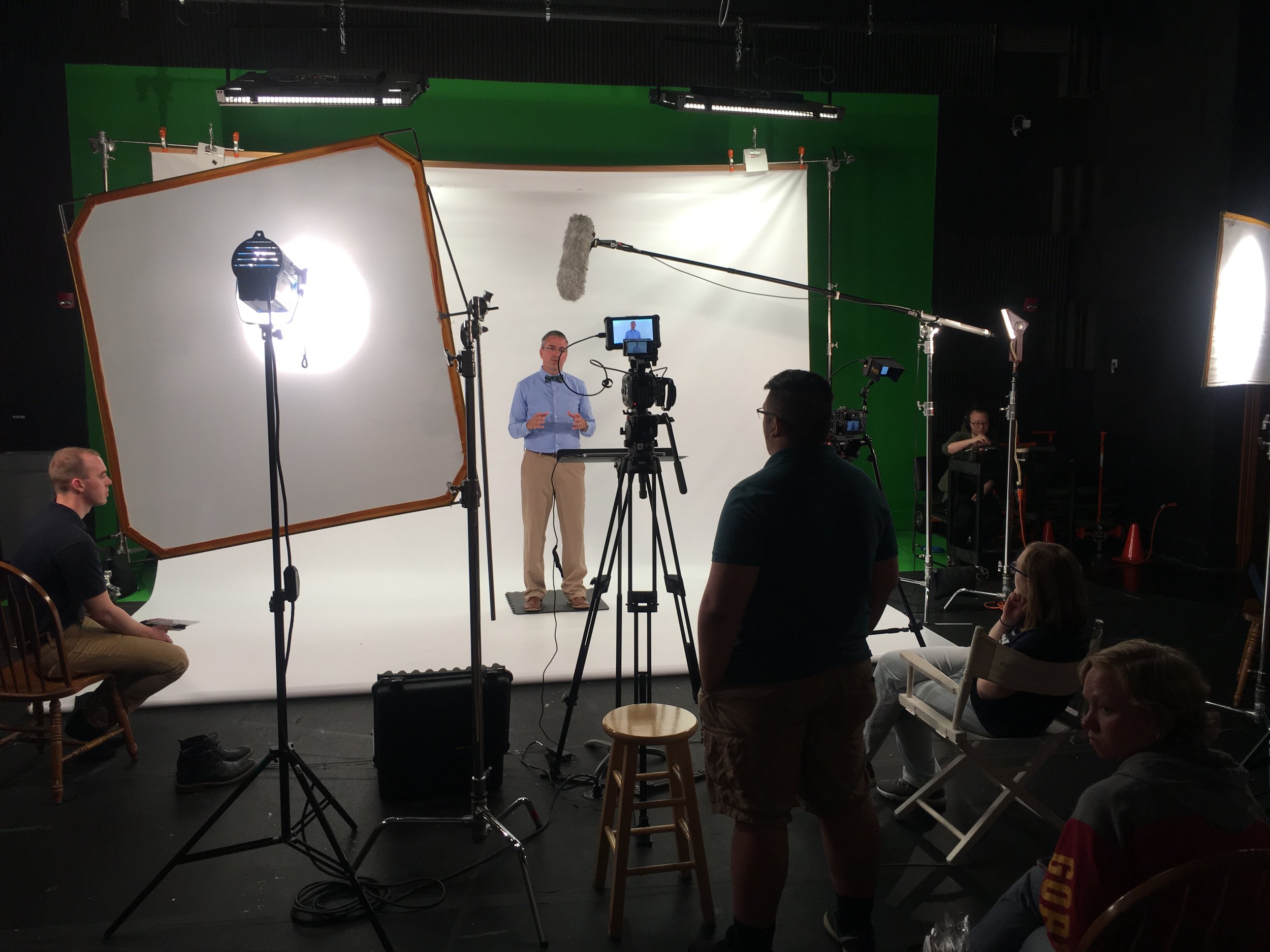



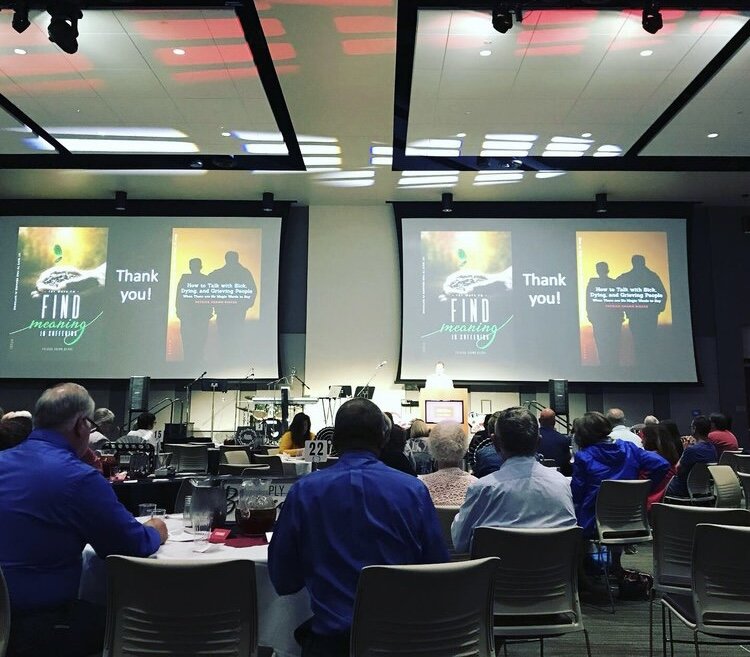







Creating a Supportive Workplace to Prevent Burnout
A supportive workplace is essential for preventing burnout. Learn key strategies to foster a healthy, engaging work environment and support employee well-being.
Preventing burnout starts with creating a supportive workplace. By fostering a healthy and engaging environment, organizations can help employees thrive and maintain their well-being.
Key strategies for creating a supportive workplace include promoting open communication, offering flexible work arrangements, and providing resources for mental health support. Encouraging regular feedback and involving employees in decision-making processes can also help create a sense of ownership and engagement, reducing the risk of burnout.
Employers can support mental health by providing access to counseling services, promoting wellness programs, and encouraging a healthy work-life balance. This might include offering flexible work hours, remote work options, and regular mental health days.
Creating opportunities for professional growth and development is also crucial. Providing training, mentorship programs, and career advancement opportunities can help employees feel valued and motivated. Recognizing and celebrating achievements, both big and small, can also boost morale and prevent burnout.
In addition, fostering a culture of collaboration and support can help employees build strong relationships and feel connected to their work. This might involve team-building activities, regular check-ins, and creating spaces for open and honest communication.
By implementing these strategies, organizations can create a supportive and engaging work environment that helps prevent burnout and promotes overall well-being. This not only benefits employees but also enhances overall organizational performance and resilience.
Personal Stories of Moral Distress and Recovery
Personal stories of moral distress offer valuable insights into overcoming ethical challenges. Learn from real-life experiences and discover recovery strategies.
Personal stories of moral distress offer valuable insights into the emotional and ethical challenges professionals face. These real-life experiences highlight the importance of support and recovery strategies.
One example involves a healthcare professional who faced moral distress due to policy changes that limited patient care options. By seeking support from colleagues and engaging in ethical discussions, they were able to navigate these challenges and find a path to recovery.
A teacher experienced moral distress when required to enforce disciplinary measures they believed were unjust. By joining a support group and advocating for policy changes, they found a way to align their actions with their values and reduce their distress.
Sharing these stories can inspire others to seek help and highlight the importance of supportive workplace environments in addressing moral distress. Employers can create platforms for employees to share their experiences and learn from one another.
In addition, providing resources such as counseling services, ethics training, and opportunities for professional development can help individuals recover from moral distress and build resilience. By fostering a culture of support and understanding, organizations can help employees navigate ethical challenges and maintain their well-being.
Strategies for Mitigating Moral Distress in the Workplace
Mitigating moral distress requires effective strategies and a supportive work environment. Discover how to foster ethical discussions and provide necessary support.
Mitigating moral distress in the workplace requires a proactive approach. By implementing effective strategies, organizations can create supportive and ethical environments that help employees navigate challenging situations.
Key strategies for mitigating moral distress include providing regular training on ethical decision-making, establishing clear channels for ethical consultations, and fostering a culture of open communication. This might involve creating ethics committees or support groups where employees can discuss their concerns and seek guidance.
Encouraging employees to voice their concerns without fear of retribution is crucial. Organizations should establish clear protocols for addressing ethical issues and ensure that employees feel safe and supported when raising concerns. Providing access to counseling services and promoting mental health awareness can also help mitigate the impact of moral distress.
Regularly reviewing and updating organizational policies to align with ethical standards is another important strategy. This ensures that policies are flexible enough to accommodate the needs of both employees and clients. Employers should also encourage a culture of ethical awareness by promoting transparency and accountability.
By addressing moral distress proactively, organizations can create a healthier and more supportive work environment. This not only benefits employees but also enhances overall organizational performance and resilience.
The Impact of Moral Distress on Healthcare Professionals
Moral distress significantly impacts healthcare professionals. Understand its effects and explore strategies to support these essential workers.
Healthcare professionals often face ethical dilemmas that can lead to moral distress. This distress can have a profound impact on their well-being and job performance.
Moral distress in healthcare can result from policies that limit treatment options or situations where professionals feel unable to provide the best care possible. For example, during the COVID-19 pandemic, many healthcare workers faced moral distress when resources were scarce, and they had to make difficult decisions about patient care.
This distress can lead to burnout, decreased job satisfaction, and high turnover rates. Healthcare professionals experiencing moral distress may also suffer from anxiety, depression, and other mental health issues. The emotional toll of constantly facing ethical dilemmas can be overwhelming.
Supporting healthcare professionals involves providing resources for ethical consultations, fostering open communication, and ensuring that policies are flexible enough to accommodate the needs of both patients and staff. This might include creating ethics committees, offering regular training on ethical decision-making, and providing access to counseling services.
Organizations can also promote a culture of support and understanding by encouraging healthcare professionals to discuss their experiences and seek guidance when facing ethical dilemmas. By addressing moral distress proactively, healthcare institutions can help maintain the well-being of their staff and ensure the highest quality of patient care.
Identifying Moral Distress in the Workplace
Moral distress can be subtle but significant. Learn to identify key signs and explore effective solutions to support affected individuals in the workplace.
Moral distress can be subtle but significant, impacting individuals' emotional and professional well-being. Recognizing the key signs is essential for providing the necessary support.
Signs of moral distress include feelings of frustration, powerlessness, and guilt when one's actions conflict with their ethical beliefs. These feelings can lead to burnout if not addressed. For instance, a teacher might feel powerless when unable to provide adequate support to students due to restrictive school policies.
Other signs of moral distress include anxiety, insomnia, and a sense of being trapped in a situation that goes against one’s values. These symptoms can affect job performance, leading to mistakes and further ethical dilemmas. Recognizing these signs early is crucial for providing the necessary support and preventing long-term damage.
Creating a supportive environment where employees feel comfortable discussing ethical concerns is crucial. Employers can offer training on ethical decision-making, provide access to counseling services, and establish clear protocols for addressing ethical issues. Regular check-ins and open communication can also help employees feel supported and valued.
In addition, fostering a culture of ethical awareness and accountability can help mitigate moral distress. This might include encouraging employees to voice their concerns, creating opportunities for ethical discussions, and ensuring that organizational policies align with ethical standards.
Personal Stories of Moral Distress and Recovery
Personal stories of moral distress offer valuable insights into overcoming ethical challenges. Learn from real-life experiences and discover recovery strategies.
Personal stories of moral distress offer valuable insights into the emotional and ethical challenges professionals face. These real-life experiences highlight the importance of support and recovery strategies.
One example involves a healthcare professional who faced moral distress due to policy changes that limited patient care options. By seeking support from colleagues and engaging in ethical discussions, they were able to navigate these challenges and find a path to recovery.
A teacher experienced moral distress when required to enforce disciplinary measures they believed were unjust. By joining a support group and advocating for policy changes, they found a way to align their actions with their values and reduce their distress.
Sharing these stories can inspire others to seek help and highlight the importance of supportive workplace environments in addressing moral distress. Employers can create platforms for employees to share their experiences and learn from one another.
In addition, providing resources such as counseling services, ethics training, and opportunities for professional development can help individuals recover from moral distress and build resilience. By fostering a culture of support and understanding, organizations can help employees navigate ethical challenges and maintain their well-being.
Moral Distress: The Deep Wounds of Ethical Conflicts
Moral distress arises from ethical conflicts and can cause deep emotional wounds. Understand its impact on professional well-being and how to address it.
Moral distress occurs when individuals are forced to act against their ethical beliefs, causing deep emotional wounds. This distress is a significant factor in the experience of burnout, particularly in professions that involve high-stakes decisions.
Ethical conflicts often arise in healthcare, where professionals must make decisions that impact patient care. When these decisions conflict with personal values, it can lead to severe moral distress. For example, a nurse might be required to follow a policy that they believe is not in the best interest of their patient, leading to feelings of guilt and frustration.
Moral distress is not limited to healthcare. It can occur in any profession where individuals face ethical dilemmas. Teachers, law enforcement officers, and social workers, among others, often encounter situations where their personal values are at odds with institutional policies or practices.
Understanding and addressing moral distress involves creating environments where ethical discussions are encouraged. Support systems should be in place to help professionals navigate these challenging situations. This might include regular ethics training, access to counseling services, and establishing clear protocols for raising ethical concerns.
Organizations can also create ethics committees or support groups where employees can discuss their experiences and seek guidance. By fostering an open and supportive environment, employers can help reduce the impact of moral distress and promote overall well-being.
The Reduced Sense of Personal Accomplishment in Burnout
Moral distress arises from ethical conflicts and can cause deep emotional wounds. Understand its impact on professional well-being and how to address it.
One of the hallmarks of burnout is a reduced sense of personal accomplishment. This feeling can be incredibly demoralizing, making it hard to find meaning and satisfaction in your work.
When burnout sets in, individuals often feel that their efforts are not making a meaningful impact. This sense of futility can lead to decreased motivation and engagement. For example, a teacher might feel that despite their best efforts, their students are not making progress. Similarly, a healthcare worker might feel that they are not making a difference in their patients' lives.
Addressing this aspect of burnout involves recognizing and celebrating small achievements. Setting realistic goals and breaking tasks into manageable steps can help restore a sense of accomplishment. Employers can support this by providing regular feedback and recognition for employees' efforts.
Fostering a supportive work environment that values each individual's contributions is also crucial. This might include creating opportunities for professional development, encouraging collaboration, and providing resources for personal growth. By helping employees see the impact of their work, organizations can combat feelings of inadequacy and frustration.
In addition, individuals can take proactive steps to combat burnout by seeking support from colleagues, mentors, or professional counselors. Engaging in activities outside of work that bring joy and fulfillment can also help restore a sense of balance and well-being.
The Reduced Sense of Personal Accomplishment in Burnout
Burnout often results in a reduced sense of personal accomplishment. Explore strategies to combat this feeling and restore your sense of purpose.
One of the most disheartening aspects of burnout is the feeling that your work no longer matters. This low sense of personal accomplishment can sap your motivation and make it difficult to find satisfaction in your professional life. How can we overcome this aspect of burnout and reignite our sense of achievement?
Understanding Low Sense of Personal Accomplishment:
A low sense of personal accomplishment is when you feel like your efforts don't make a difference. Despite your hard work, you might feel like you're not achieving anything meaningful. This can lead to a vicious cycle of decreased motivation and performance.
Symptoms of Low Sense of Personal Accomplishment:
Feeling Ineffective: Believing that your work doesn't have a significant impact.
Lack of Motivation: Struggling to find the drive to complete tasks.
Self-Doubt: Constantly questioning your abilities and worth.
Decreased Performance: Noticing a decline in the quality and efficiency of your work.
Addressing Low Sense of Personal Accomplishment:
Set Achievable Goals: Break down your tasks into smaller, manageable goals to create a sense of progress.
Celebrate Successes: Acknowledge and celebrate your achievements, no matter how small.
Seek Feedback: Ask for constructive feedback from colleagues and supervisors to gain a better perspective on your contributions.
Reflect on Impact: Take time to reflect on the positive impact your work has on others.
Conclusion:
Feeling like your work lacks meaning and value is a core aspect of burnout, but it's possible to overcome this. By setting achievable goals, celebrating successes, seeking feedback, and reflecting on your impact, you can regain your sense of personal accomplishment and find satisfaction in your professional life.
The Emotional Toll of Burnout: Recognizing the Signs
Emotional exhaustion is at the heart of burnout, affecting professionals across various industries. It's more than just being tired; it's a pervasive fatigue that impacts your ability to function effectively. But what exactly is emotional exhaustion, and how can we combat it?
Defining Emotional Exhaustion:
Emotional exhaustion is a state of chronic emotional depletion. It's the feeling of being completely drained and unable to cope with daily demands. This type of exhaustion doesn't go away with rest and can lead to a significant decline in performance and well-being.
Symptoms of Emotional Exhaustion:
Chronic Fatigue: Feeling tired all the time, even after a full night's sleep.
Insomnia: Difficulty falling asleep or staying asleep.
Irritability: Increased frustration and anger over minor issues.
Lack of Motivation: Difficulty finding the energy or desire to engage in activities you once enjoyed.
Impact on Professional Life:
Emotional exhaustion can severely impact your professional life. It can lead to decreased productivity, increased errors, and strained relationships with colleagues. Over time, it can erode your sense of professional identity and fulfillment.
Recovering from Emotional Exhaustion:
Prioritize Self-Care: Engage in activities that rejuvenate you, such as exercise, hobbies, and relaxation techniques.
Set Boundaries: Learn to say no and protect your time and energy.
Seek Support: Talk to a trusted colleague, friend, or therapist about your feelings.
Evaluate Workload: Work with your manager to adjust your workload and expectations.
Conclusion:
Emotional exhaustion is a serious component of burnout that requires attention and care. By recognizing its symptoms and taking proactive steps, you can begin to recover and rebuild your energy and motivation.
Depersonalization in Burnout: Losing Connection and Cynicism
Depersonalization is a critical aspect of burnout, leading to cynicism and lost connections. Learn how it impacts workplace relationships and overall well-being.
Depersonalization is a significant aspect of burnout, leading to feelings of detachment and cynicism. It's the sensation of being disconnected from your work and the people around you, which can have profound effects on your professional and personal life. But what causes depersonalization, and how can we overcome it?
Understanding Depersonalization:
Depersonalization involves a sense of detachment from your job and colleagues. It can manifest as cynicism, where you start to view your work and those around you with skepticism and negativity. This emotional distance can create a barrier that makes it challenging to find meaning and satisfaction in your work.
Symptoms of Depersonalization:
Cynicism: Viewing your job and colleagues with suspicion and negativity.
Emotional Numbness: Feeling emotionally numb or detached.
Isolation: Withdrawing from social interactions at work.
Reduced Empathy: Difficulty empathizing with colleagues or clients.
Causes of Depersonalization:
Depersonalization often results from prolonged exposure to stressful and demanding work environments. It can also be a coping mechanism to protect yourself from the emotional toll of your job. However, this detachment can lead to further isolation and a deeper sense of burnout.
Overcoming Depersonalization:
Reconnect with Your Values: Reflect on why you chose your profession and what you find meaningful about your work.
Seek Support: Engage in conversations with colleagues or a therapist to discuss your feelings.
Engage in Team Activities: Participate in team-building activities to rebuild connections with your colleagues.
Practice Mindfulness: Use mindfulness techniques to stay present and connected to your work.
Conclusion:
Depersonalization is a challenging aspect of burnout that can leave you feeling disconnected and cynical. By understanding its symptoms and causes, you can take steps to reconnect with your work and colleagues, fostering a more fulfilling professional life.
Understanding Burnout: The Hidden Crisis
Burnout isn't just a buzzword; it's a harsh reality for many professionals. It's more than just feeling tired after a long day—it's a profound, soul-crushing exhaustion that permeates every aspect of life. But what exactly does burnout feel like? And how can we navigate through its murky waters?
Understanding Burnout:
Burnout manifests as a combination of emotional exhaustion, depersonalization, and a low sense of personal accomplishment. It's when your job feels like a never-ending treadmill, and no amount of rest seems to recharge your batteries. You might feel trapped, hopeless, and numb, going through the motions without any real engagement or satisfaction.
Emotional Exhaustion:
This isn't just about feeling tired. Emotional exhaustion is a deep-seated fatigue that doesn't go away with sleep. It's the kind of tiredness that saps your motivation and leaves you feeling drained even after a weekend off. You might find it hard to get out of bed in the morning or dread the thought of facing another day at work.
Depersonalization:
Depersonalization makes you feel detached from your job and the people around you. You might become cynical, sarcastic, or even feel like a robot going through the motions. This disconnect can make it difficult to maintain professional relationships and can lead to feelings of isolation and loneliness.
Low Sense of Personal Accomplishment:
When you're burned out, it's hard to see the value in your work. You might feel like you're not making a difference, no matter how hard you try. This can lead to a downward spiral of self-doubt and decreased performance, further fueling the burnout cycle.
Addressing Burnout:
Recognizing the signs of burnout is the first step towards recovery. It's essential to take proactive measures, such as seeking support from colleagues, practicing self-care, and setting realistic expectations. Remember, burnout is not a reflection of your worth or abilities but a signal that changes are needed.
Conclusion:
Burnout is a serious issue that affects many professionals. By understanding its symptoms and taking steps to address them, you can begin the journey towards recovery and regain your sense of purpose and fulfillment.
The first step to overcoming burnout
Burnout Newsletter
Ever had a heart-to-heart with a friend about burnout? It's like peering into a mirror reflecting back your own struggles. I recently had one of these conversations with a friend, and what struck me was how she couldn't even see the burnout looming over her.
Isn't it ironic?
It's a bizarre paradox, isn't it? When we're on the brink of burnout, instead of hitting the brakes, we press harder on the accelerator, hoping sheer momentum will carry us through. We dive headfirst into our tasks, convinced that if we just work a little harder, we'll break through to the other side.
That's the sound of inevitability
It's a scenario so common, it's practically a cliché. We casually toss around phrases like "I'm so burned out." But beneath the jokes lies a harsh truth: burnout is real, and it's gnawing away at our well-being.
It doesn't stop there
Even worse, burnout doesn't just impact the coworker. It affects teams and organizations, hindering progress towards important missions.
The simplest way to explain it? I have problems.
Recovery begins with a stark admission: "I am not okay." It's about acknowledging that something is fundamentally off-kilter, whether it's a sudden indifference towards work, a bone-deep weariness that refuses to lift, or a creeping sense of insignificance in the workplace.
These are the warning signs of burnout, flashing neon signals we can't afford to ignore.
I'm looking at the man in the mirror
I've been there, convincing myself that if I just kept up the facade of "having it all together," everything would magically fall into place. But it was a dangerous game, and I paid the price when I slammed into a second wall – AFib and depression.
It took hitting rock bottom for me to finally confront the truth.
Articles
The impact of the pandemic on leaders: A pathway to healing and self-care
Nurse Management magazine
This article highlights the lack of research on the impact of burnout on nurse leaders, and offers a unique four-step process that leaders can use to provide self-care (instead of ONLY telling them that burnout is their fault).
A national study of moral distress among U.S. internal medicine physicians
PLOS ONE
Perceived organizational support is the primary mitigator of burnout at work. This study demonstrates that physicians' perception of their organizations' support was just as important as having PPE during the pandemic. We can't control the supply chain, but we can control how much those around us feel supported.
Featured Resource:
New Instagram Profile
Dedicated to Overcoming and Avoiding Burnout
Check it out today!
Even on top of a mountain
⛰️ Even at the top of a mountain.
🚶🏼♂️When Kristen Riecke and I visited Saint Croix last month, I hiked to the top of Goat Hill–the highest point on the island.
As a Hoosier, I am built for flat surfaces. So, I found the hike to be strenuous.
🎉But it was worth it.
In two ways.
🏝️First, the views were the most magnificent I’ve ever seen. On this tiny island, you can see three of the four coasts from the top of Goat Hill. Turquoise waters. Verdant hills. Colorful homes dotting the horizon. And, of course, the sandy thread that rings most of the land.
Second, I met exactly two (2) people at the top of the mountain (you can hike much of St. Croix without seeing other people).
🗣️ After the usual small talk…
“Are you from here?”
“No, how about you? Where are you from?”
“First time on the island? Yeah, me, too.”
“Want me to take a picture for you?”
😔One of them mentioned that it had been a hard year.
I probed. Even in paradise, I have to probe.
❓“Just like, work stuff and cold weather, or something more?”
What they shared next is private, so I won’t write the details here.
But, we talked for a long time about
1. A recent death in their immediate family and
2. Burnout at work
Now, mind you, I consider these to be two of the most important topics in the world.
And here I was.
Talking with (and hopefully listening well to) stories of grief and burnout.
0️⃣ With zero other humans in sight.
🌄On.The.Mountaintop. Literally.
Even on top of the mountain, we cannot escape these truths.
😓When people die, it can be traumatic. And when we are burned out, it can be traumatic.
These things affect individuals and families. But they also affect teams and organizations.
🏢Trauma, burnout, and grief aren't just the concerns of individual coworkers. They affect the entire organization. I love to empower leaders to foster resilience in any situation.
#grief
#burnout
#stcroix
I didn’t cry for 457 days
😔 I didn’t cry for 15 months.
🤔 I had always assumed that depressed people cried constantly.
Of course I was wrong.
😞 Depression, for me, felt like soul-level fatigue, anxiety, and detachment.
😶 From the time of my AFib incident, caused by workplace stress and burnout (link in comments), I did not cry for 457 days.
A younger, less experienced Patrick Riecke might have considered this a heroic feat of internal strength.
After all, tears are a sign of weakness, right? ❌
🙅🏼♂️ No.
(Credit Kristen Riecke)
😢 Tears and normal, natural, and necessary.
💊 After eight months of worsening depression and anxiety, I finally accepted the medical intervention my doctor had offered.
I went on an SSRI for the first time in my life.
😔 What made me finally accept help?
😨 My dark days were getting scarier. Once, I saw panic on my bride’s face, Kristen Riecke, scared that she was losing me.
So, yes, this intervention was necessary. I talk more about this in a previous post, linked in the comments.
🧘♂️ Coupled with lifestyle changes, daily meditation, and a host of other adjustments, I started to heal from workplace stress and #burnout.
🏥 Months later, the intensity of my daily life decreased dramatically when I left my #healthcarejob after more than ten years. I loved that job, but it was time for a change.
💬 So, last month, I talked with my doctor (and spouse) about tapering off of the medicine.
To be honest, I missed being able to cry.
😞 Depression took that from me.
💊 And while the SSRI saved my life, it leveled out my emotions so effectively that tears were still elusive, even as my depression faded.
A few weeks ago, under #physiciansupervision, I took my last dose of the medicine I needed for eight months.
Have the tears returned?
Uh. Yes.
😭 I have cried at least ten times in the last two weeks. #notashamed
😊 But 100% of them, so far, have been tears of joy, pride, or gratitude.
For example:
😭 I cried because of the help given to me by lifelong friend Andy Didyk, coaching my new business.
😭 I cried because my son Daniel Riecke is living life in pursuit of his dreams.
😭 I cried because our daughter got her driver’s permit (tears of joy, honest!).
😭 Heck, I cried over the #Kia Super Bowl ad (linked in the comments).
1️⃣ First, men cry. Professionals cry. People who have it “all together” cry, or at least we should.
Educated, polished, suit-wearing, white, middle-aged men with “Rev.” before their name–we MUST cry. And we must never shame others for doing likewise.
2️⃣ And second, if #depersonalization is one of the hallmarks of #burnout (and it is), then the return of my tears is a signal that my #burnoutrecovery is nearing completion.
So, welcome back, crying Patrick. I’ve missed you.
😭 And now I’m crying. 😆
#crying #tears
Join the conversation and see the links on LinkedIn: Click Here
Wellbeing programs
⚠️A warning about well-being programs: They can make burnout worse!
🩹There are studies that show positive results when wellbeing programs are introduced. But they aren't a bandage for deeper issues.
📚If you require your team to work unreasonably long hours with insufficient pay and support, don't hand them a gratitude journal.
😤They might throw it back at you!
Guilt for moral distress
😰 This still causes me guilt--and sometimes shame.
🙏🏽 Thank you to an attendee from yesterday's event at Parkview Health. She gave me a new perspective on the zero visitor policy that #hospitals enacted during the pandemic.
Groundhog Day
😂 Who remembers this movie? Extra points if you comment the name of the character in the hat.
📆It's Groundhog Day! If your job feels like this, you might be experiencing #burnout!
#groundhogday #groundhog #billmurray #roboticatwork
Bucket List Day!
🎉 Bucket list day!!
😁 I coach burned out professionals to create a bucket list. That might sound crazy. "I am emotionally exhausted, darkly cynical, and questioning the meaning of my life. And you want me to make a bucket list!?"
✅ Yes!
🤗 Why? Because it reminds us that we have value. It's okay to have desires and do more than just survive. Making a bucket list can also be a healthy distraction from occupational overwhelm. It shift my focus to joy, connection, and hope.
Ben Nemtin is an inspiration for many to overcome depression and listlessness by creating a bucket list. His hashtag#bucketlistjournal has inspired me.
🏀 Today I am crossing off another bucket list item as I recover from #workplaceburnout. Two of my adult children, Levi and Daniel Riecke, are traveling to Bloomington to see the Indiana University Men's Basketball team live in action.
☀ Looking forward to days like today brighten my spirit and remind me that I am more than just a job title.
🙏 Special thanks to Raymond Dusman, MD, MBA, a good friend who provided the tickets for us!
❓ What's on your bucket list? Comment below. Maybe someone will see your comment and help you check it off!
#onepercentmorehuman
Medicine, a hard pill to swallow
💊 "Everyone is taking something for their mental health these days."
But not me.
Nope, I made it to my mid-forties. I had never been depressed, anxious, or needed medication.
Until
At 44 years old, I was diagnosed with depression and anxiety.
But strength, spirituality, and maturity were my shields. Despite my doctor's suggestion of an #SSRI, I was convinced I could navigate this without medication.
I was wrong.
Months later, after hitting my lowest point, I confronted the darkness within.
It was time to humble myself, and I called my doctor. That week marked the beginning of my journey with mental health medication – no quick fix, no instant relief, but a path to healing.
Admitting my need for help doesn't diminish my strength, spirituality, or maturity. In fact, it might be the bravest step I've ever taken. 💪
#MentalHealthJourney #BreakingTheStigma #StrengthInVulnerability
